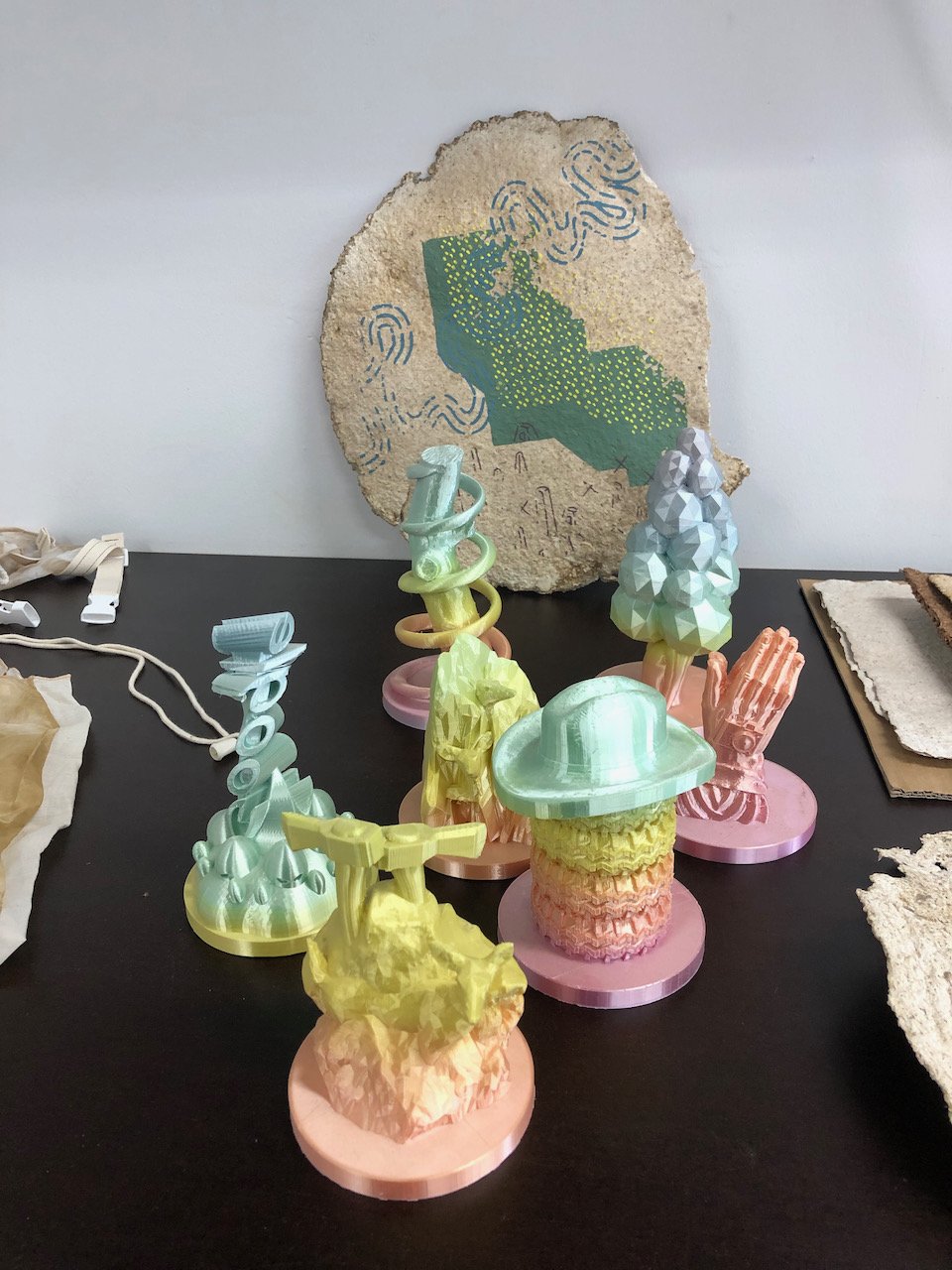Learning from mushrooms and nature with The Mycological Twist
Today we are warmly welcomed by Eloïse Bonneviot and Anne de Boer in their studio in Tempelhof. They are both artists and together they call themselves The Mycological Twist!
Eloïse comes from Paris and doesn’t speak German very well, but Anne, being Dutch, finds it much easier. He promises to translate for Eloise if she doesn't understand something (or we don’t understand her). Anne tells us that they met in Amsterdam. They have also lived in London and Paris, and now they have been in Germany for three years. (He also tells us that Anne is a man’s name in the Netherlands).
We look around her studio and see candy-coloured, iridescent figures. A box full of wool and textiles. A small swimming pool without water in it, but with all kinds of other things. We can’t quite figure it all out yet, so the two of them talk a bit and we can ask questions.
As The Mycological Twist, Anne and Eloïse often work with mushrooms and other natural materials they find in their surroundings: Wood, moss, plants. And they also invent games – board games and video games. (They also want to develop a game that will be a mixture of video and board games and where the audience can influence the video game. But that’s still up in the air...) Their games are always about our environment and how people, animals, actually everything in nature behaves towards each other. You can learn a lot from this! For example, the players have to put themselves in the shoes of non-human characters. What would life in the world be like as a mushroom, a stone or a cloud?
Another board game is called Troll Swamp. Do we know what trolls are, Anne asks? We immediately think of creatures like in Lord of the Rings or from the Harry Potter world. Anne adds that there are also trolls online. These are people who deliberately annoy, disturb or insult people on the internet. The dazzling figures on the table are characters from Troll Swamp that you meet again and again in the course of the game – for example, the man who lives in the forest (and looks a bit like a tree himself) or the woman who only eats things with Spiruliuna, a certain algae. Anne and Eloïse designed the figures on the computer and then made them out of corn starch using the 3D printer.
The Mycological Twist’s work can be seen in exhibitions and museums, but sometimes also in the theatre or at festivals. They usually make a spatial installation – setting up the game and all the associated objects in the space – so that visitors can enter the artwork and play the game. The textiles are often part of the game, they serve as a board for example, and many are dyed with mushrooms. Anne tells us that they have been interested in mushrooms for a long time and collect them every autumn. What excites them both is the role of mushrooms in nature and the complex network they form. Eloïse explains that what grows above the surface is just the fruit, but the real (if you will) tree lies below the ground – the mycelium. Everything is connected through the mycelium in the soil – plants, trees, rivers, fungi – and it is through this that fungi communicate with each other and with their environment. (It's not without reason that the mycelium is called "nature's internet".) For example, if a tree needs water but the stream is too far away, the mycelium can pass on the information and ensure that the stream water reaches the tree root. Crazy, isn't it?
What also fascinates the two is that mushrooms can both kill and heal trees. And it's no different with people and animals: some mushrooms are delicious, while others are totally poisonous if you eat them. What's more, some mushrooms can be used to dye beautifully (that's Eloise's speciality), and others can even be used to make paper or something like artificial leather. What multi-talents!
And now we get to dye little cloths ourselves with indigo - or more precisely: batik. Indigo is not a fungus, but a plant that has been used for centuries to dye fabrics. Batik is a fabric dyeing process in which no colour should get to the textile in places. So we wrap the fabric, which is already damp (then it absorbs the indigo more easily), with a few elastics, form corners for circles or gathers for lines. But there shouldn't be too many, because we want enough liquid to reach the fabric. Anne then dips the wrapped cloths into the large vat of indigo and transfers them back into our gloved hands. It smells quite a bit like rotten eggs from the vat! We then remove the rubbers and spread the fabrics out so that air can get everywhere. Indigo reacts to oxygen and only then develops its typical colour. We wait a short time while the colour develops from yellow to greenish to blue. After washing out, nothing stains any more and the fabric is lightfast.
Happy with our little works, we say goodbye to The Mycological Twist. We have learned a lot today and thanks to them we now see mushrooms with completely different eyes!








